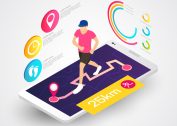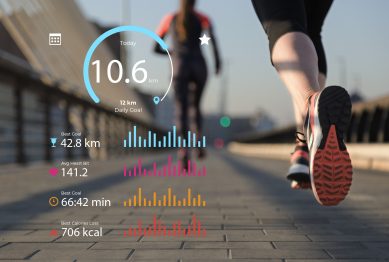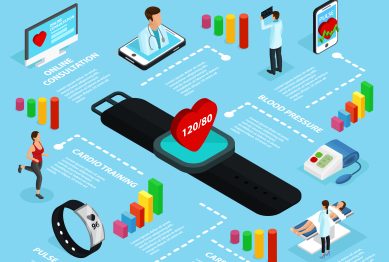In an era where constant notifications, remote work, and information overload dominate daily life, mental clarity has become a critical priority. More people are recognizing that productivity isn’t just about working harder—it’s about thinking clearly. Understanding simple practices to boost mental clarity can help reduce stress, sharpen focus, and improve overall well-being.
In 2025, a new wave of strategies is emerging. From digital detoxing and mindful micro-breaks to nutrition-driven brain health and sleep optimization, the focus is shifting toward sustainable, science-backed routines. This guide explores current trends and practical steps you can use to create mental space, enhance focus, and improve decision-making.

Why Mental Clarity Matters in 2025
Mental clarity is more than a wellness buzzword. It directly impacts your ability to concentrate, solve problems, and make effective decisions. A study published in Nature Human Behaviour (2024) highlighted that people experiencing chronic cognitive overload—caused by constant digital stimulation—report a 30% decrease in decision-making efficiency.
At the same time, organizations are starting to prioritize employee mental clarity. According to Deloitte’s Workplace Well-being Report (2024), companies integrating mindfulness and focus training saw a 25% boost in productivity and a measurable drop in burnout rates. As these findings gain traction, simple practices that promote clarity are becoming mainstream tools for both personal and professional growth.
1. Adopt Mindful Micro-Breaks
One of the most effective yet underrated practices to boost mental clarity is taking mindful micro-breaks. Unlike traditional long breaks, these are short pauses lasting just two to five minutes, designed to reset the brain.
Benefits of Micro-Breaks:
- Reduce decision fatigue by giving the brain recovery time.
- Lower stress by activating the parasympathetic nervous system.
- Improve focus when returning to tasks.
Emerging apps like Headspace Work and Calm Business now offer structured micro-break reminders, including guided breathing exercises or quick mindfulness sessions. Even standing up to stretch or practicing deep breathing for a few minutes can restore cognitive sharpness.
2. Optimize Your Sleep Environment
Sleep remains one of the most essential factors in mental clarity, yet modern lifestyles often compromise it. The Sleep Foundation (2024) emphasizes that disrupted sleep cycles can reduce memory recall and attention span by up to 40%.
Sleep Optimization Tips:
- Use smart lighting that gradually dims to mimic natural sunset rhythms.
- Maintain a cool room temperature between 60–67°F (15–19°C).
- Avoid blue light exposure from screens at least one hour before bed.
- Adopt consistent sleep and wake times, even on weekends.
With wearables like Oura Ring and WHOOP providing sleep analytics, individuals can track their sleep stages and make data-driven improvements.
3. Practice Digital Minimalism
Digital distractions remain one of the biggest barriers to mental clarity. In 2025, digital minimalism—intentional control over screen time—is gaining momentum as a lifestyle shift.
Practical Steps for Digital Minimalism:
- Turn off non-essential notifications.
- Designate screen-free zones, like the bedroom or dining table.
- Use “focus modes” available on smartphones to block distracting apps.
- Limit social media use to set times during the day.
A survey by Pew Research Center (2024) found that 58% of adults practicing digital minimalism reported higher daily focus and reduced anxiety. By reducing digital clutter, the brain conserves energy for more meaningful thinking.
4. Use Nutrition to Support Brain Health
Food directly affects cognitive performance. Diets rich in whole foods, healthy fats, and antioxidants are increasingly linked to improved focus and clarity.
Brain-Boosting Nutritional Practices:
- Prioritize omega-3 fatty acids from fish, flaxseeds, or walnuts.
- Add antioxidant-rich foods like blueberries, leafy greens, and dark chocolate.
- Stay hydrated—mild dehydration can impair cognitive performance.
- Limit refined sugar and processed foods that cause energy crashes.
Emerging research from Harvard Health Publishing (2024) suggests that the Mediterranean diet not only improves cardiovascular health but also enhances memory and attention span.
5. Leverage Movement and Exercise
Physical activity is one of the simplest ways to clear mental fog. Exercise stimulates blood flow to the brain and promotes the release of endorphins, which elevate mood and focus.
Practical Movement Ideas:
- Morning walks to set a positive tone for the day.
- Short bursts of exercise between work sessions (e.g., 10 push-ups or squats).
- Yoga and tai chi for both mindfulness and flexibility.
- Outdoor activities to combine exercise with natural light exposure.
According to the American Psychological Association (2024), even 20 minutes of light movement daily can improve cognitive flexibility by 15%.
6. Create Rituals for Mental Decluttering
Mental clutter—unfinished tasks, racing thoughts, and constant decision-making—can cloud clarity. Daily rituals that offload this mental load are increasingly popular.
Rituals to Try:
- Journaling before bed to process lingering thoughts.
- Morning planning sessions to outline top priorities.
- Brain-dump lists where you write down everything on your mind to free mental space.
Digital tools like Notion and Evernote also provide structured ways to organize tasks, reducing cognitive overload and increasing focus.
7. Harness the Power of Breathwork
Breathwork has emerged as a science-backed practice for restoring mental clarity. Structured breathing techniques help regulate the nervous system and improve concentration.
Popular Breathwork Techniques:
- Box breathing (inhale, hold, exhale, hold—four seconds each).
- Alternate nostril breathing for balance and calm.
- Deep diaphragmatic breathing to reduce stress.
Studies published in Frontiers in Human Neuroscience (2024) show that just 10 minutes of controlled breathing daily improves working memory and reduces anxiety.
8. Prioritize Environment Design
The environment you work and live in has a profound impact on clarity. Cluttered, noisy, or poorly lit spaces drain focus. Designing environments intentionally is an emerging wellness trend.
Environment Design Ideas:
- Declutter regularly to reduce visual distractions.
- Use plants to improve air quality and add calming greenery.
- Adjust lighting to natural tones for better focus.
- Create quiet zones free from noise interruptions.
Research from the International WELL Building Institute (2023) shows that biophilic design elements like greenery and natural light reduce stress and increase cognitive performance.
9. Practice Single-Tasking
Multitasking has long been glorified, but research continues to show that it reduces efficiency and increases stress. Single-tasking—focusing on one task at a time—is proving far more effective in achieving clarity.
How to Practice Single-Tasking:
- Break large tasks into smaller steps.
- Set timers (e.g., the Pomodoro technique: 25 minutes of focus, 5 minutes rest).
- Eliminate distractions during work sessions (close extra tabs and silence notifications).
Harvard Business Review (2024) emphasizes that single-tasking not only improves accuracy but also enhances creativity by allowing the brain to fully immerse in one activity.
10. Incorporate Mindfulness Practices
Mindfulness remains one of the most powerful practices to boost mental clarity. Unlike abstract meditation, mindfulness is about being fully present in daily activities.
Easy Mindfulness Practices:
- Eat meals slowly, focusing on flavors and textures.
- Practice mindful walking, noticing surroundings without distractions.
- Begin the day with a five-minute body scan meditation.
Mindfulness reduces cognitive clutter and enhances awareness, creating space for clearer thinking.
Conclusion
In 2025, achieving mental clarity is less about radical lifestyle overhauls and more about integrating small, consistent practices into daily life. From mindful micro-breaks and optimized sleep routines to digital minimalism, nutrition, and single-tasking, the tools for clarity are accessible and practical.
As research shows, clarity is linked to improved decision-making, better productivity, and overall well-being. By adopting these simple practices to boost mental clarity, individuals can thrive in a fast-paced, digitally connected world.
References
- Neural correlates of breath work, mental imagery of yoga postures, https://www.frontiersin.org
- The effect of digital detox through digital minimalism using, https://www.sciencedirect.com
- Mindful micro-breaks—The potential of a 10-minute “paws”, https://www.aaha.org









